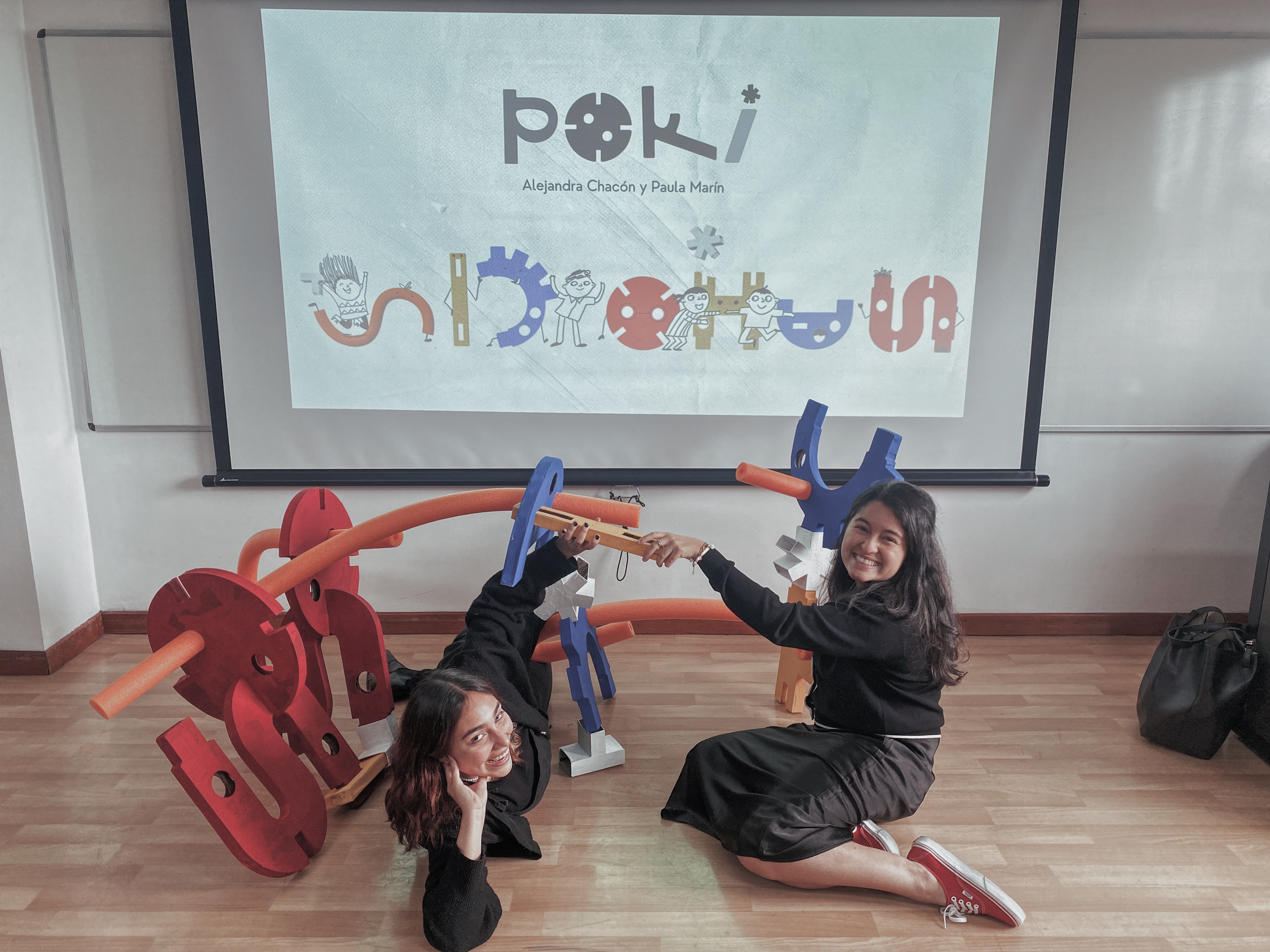What it does
POKI is an open-ended toy that sparks creativity, movement, and social interaction in children. Invites free building without instructions and encouraging problem-solving. Safe, inclusive, and adaptable, a long-lasting educational tool perfect for schools.
Your inspiration
During our training as designers, we noticed that most toys impose fixed narratives, limiting children's creativity. We also observed an industry focused on fast production rather than meaningful experiences. This led us to ask: what if a toy didn’t say “this is” but instead asked “what do you want it to be”? That question inspired the creation of a system of non-representational, sensory, and connectable parts that invite curiosity and imagination, not instruction. We wanted play to be open-ended, age-flexible, and driven by children’s own ideas.
How it works
POKI is a large-scale, open-ended play system composed of colorful, tactile pieces designed to awaken curiosity. Each part is non-representational, so children are free to decide what they are building. Some pieces connect through intuitive slot-and-peg systems, while others use soft, flexible tubes to encourage unexpected configurations. Their variety of textures, adds a sensory richness that grounds play in the body as much as in the imagination. Instead of telling kids what something is, POKI invites them to ask what it could be. The system is large enough to move around and build with physically, allowing children to involve their whole bodies and collaborate with others. Every play session is different, because the toy evolves with its users. There's no end goal, no right answer—just a space where creativity, cooperation, and critical thinking grow together, organically and joyfully.
Design process
Our journey began with a question: what kind of toy truly empowers a child’s imagination, rather than directing it? We started by researching theories of play, creativity, and early childhood development. We also studied the toy industry in Colombia, where we noticed a prevalence of symbolic toys with short lifespans, products that were quickly outgrown and rarely encouraged cooperative or critical thinking. This revealed a clear gap: the need for toys that adapt to the child, not the other way around. After evaluating several ideas using a multi-criteria matrix, we built a 1:3 scale prototype to test assembly logic and refine connections. Then, we produced a 1:1 cardboard prototype and conducted testing with six-year-olds at a primary school in Bogotá. Based on observations and feedback, we removed one underused piece, redesigned others for easier interaction, and improved structural coherence. We also researched and selected sustainable materials based on lightness, strength, and low environmental impact, and defined manufacturing processes aligned with our values. Every choice, from the height of the pieces to the use of color, was validated through co-creation with our real users: children. POKI was not just designed for them, but alongside them.
How it is different
POKI doesn't represent anything, until the children decide what it is. That freedom sets it apart from traditional symbolic toys. Its body-scale design invites full-body play, rarely found in classroom environments. The visual and tactile stimulation fosters creativity and hands-on learning. Unlike mass-produced toys, POKI uses sustainable, locally sourced materials and low-emission processes, making it ethical and eco-conscious. It’s not just a toy, it’s an educational, therapeutic and socially transformative tool.
Future plans
Our next step is to produce a full-scale version using final materials and carry out further testing in public and rural schools to adapt it to diverse contexts. We plan to design a complementary set of new pieces, along with sustainable packaging and storage systems. In the medium term, we aim to establish a local production and distribution network, enabling access to POKI across regions. Our long-term vision is to redefine how children play and learn, making open-ended play a standard in education.



Share this page on